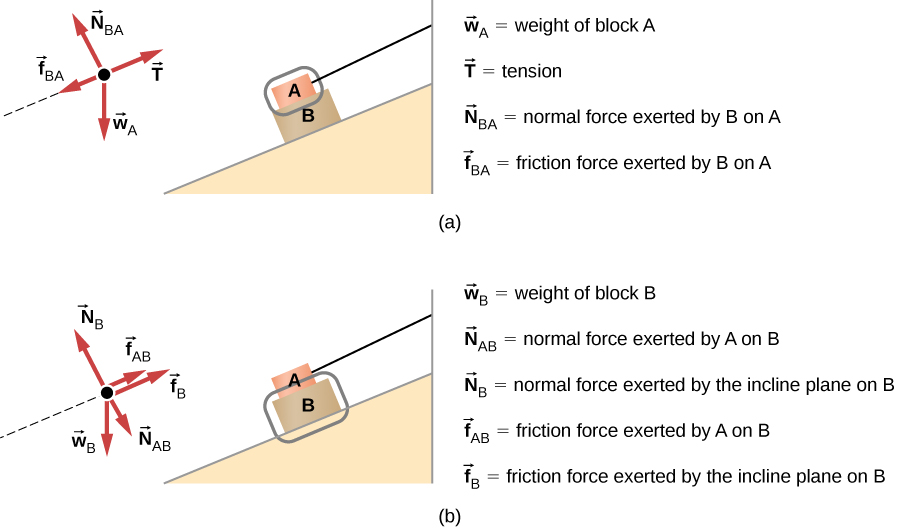Drawing free body diagrams university physics volume 1
Table of Contents
Table of Contents
If you’re working on physics or engineering problems, chances are you’ll need to know how to draw a free body diagram. This diagram is a visual representation of the forces acting on an object and is essential to understanding the problem at hand. In this post, we’ll discuss the basics of how to draw a free body diagram and give you some tips to make it easier.
When it comes to drawing a free body diagram, many people struggle with knowing where to start, what forces to include, or how to properly label them. Not only that, but it’s also essential to understand the underlying physics and concepts behind the diagram itself. Without this foundation, you won’t be able to effectively analyze the problem at hand.
To begin drawing a free body diagram, you first need to identify the object you’re analyzing and all the forces acting on that object. These forces can include things like gravity, friction, air resistance, or tension. Once you’ve identified these forces, you’ll draw them as arrows on the diagram, with each arrow pointing in the direction of the corresponding force. You’ll also need to include labels for each force, indicating its magnitude and direction.
In summary, to draw a free body diagram, you need to:
- Identify the object and all forces acting on it
- Draw arrows representing each force, with the direction and magnitude labeled
My first experience with drawing a free body diagram
I remember the first time I was tasked with drawing a free body diagram in my high school physics class. At first, I was intimidated and unsure of where to begin. However, with some guidance from my teacher and a bit of practice, I quickly got the hang of it. It’s important to remember that drawing a free body diagram is a skill that takes time and practice to master.
Some tips to help you draw a better free body diagram
To help you draw a better free body diagram, here are some tips:
- Start with a clear, simple sketch of the object you’re analyzing
- Identify all forces acting on the object, even if they’re small or seem insignificant
- Make sure your arrows are proportional in size to the force they’re representing
- Use labels to indicate the magnitude and direction of each force
- Double-check your diagram to make sure you’ve included all relevant forces
The importance of understanding free body diagrams
Free body diagrams are an essential tool for understanding physics and engineering problems. They allow us to visualize the forces acting on an object and help us identify relationships between those forces. Without this understanding, it can be difficult to solve complex problems or design effective solutions to real-world challenges.
Common mistakes to avoid when drawing a free body diagram
Here are some common mistakes to avoid when drawing a free body diagram:
- Forgetting to include all relevant forces
- Not properly labeling forces or indicating their direction
- Arrows that are not proportional in size to the force they’re representing
- Confusing the direction of the force with the direction of motion
Practice makes perfect
The best way to get better at drawing free body diagrams is to practice. Start with simple problems and work your way up to more complex ones. Don’t be afraid to ask for help or seek out additional resources if you’re struggling. With time and practice, you’ll master this important skill.
Question and Answer
Q: What is a free body diagram?
A: A free body diagram is a visual representation of the forces acting on an object. It helps us understand the relationships between these forces and how they affect the object’s motion.
Q: Why are free body diagrams important?
A: Free body diagrams are important because they allow us to visualize the forces acting on an object and help us identify relationships between those forces. Without this understanding, it can be difficult to solve complex problems or design effective solutions to real-world challenges.
Q: What are some common mistakes to avoid when drawing a free body diagram?
A: Common mistakes to avoid include forgetting to include all relevant forces, not properly labeling forces or indicating their direction, arrows that are not proportional in size to the force they’re representing, and confusing the direction of the force with the direction of motion.
Q: How can I improve my ability to draw free body diagrams?
A: The best way to get better at drawing free body diagrams is to practice. Start with simple problems and work your way up to more complex ones. Don’t be afraid to ask for help or seek out additional resources if you’re struggling.
Conclusion of how to draw a free body diagram
Drawing a free body diagram may seem intimidating at first, but with some practice and a solid understanding of the underlying physics and concepts, you’ll be able to create these diagrams with ease. Remember to start with a clear, simple sketch of the object you’re analyzing, identify all forces acting on the object, and make sure your diagram includes arrows that are proportional in size to the force they’re representing. With time and practice, you’ll be able to master this important skill and apply it to real-world challenges.
Gallery
How To Draw A Free Body Diagram: 10 Steps (with Pictures)

Photo Credit by: bing.com / body diagram draw fbd step steps
Drawing Free-Body Diagrams – University Physics Volume 1

Photo Credit by: bing.com / diagram body drawing object diagrams figure force forces friction physics draw showing block inclined plane incline ramp two down normal
How To Draw A Free Body Diagram - Cr8bydesigns

Photo Credit by: bing.com / sled below clipartart components labeled hoist diagrama trineo
How To Draw Good Free Body Diagrams (FBDs) - YouTube

Photo Credit by: bing.com / body draw diagrams fbds good
Force Diagrams Example For Science Class | Body Diagram, Diagram Design

Photo Credit by: bing.com / diagrams forces inclinado deduce maquinas quizizz simples draw 101diagrams freebody





